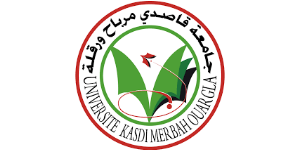Fonctionnement Microbiologique Des Sols Oasiens. Cas De Quelques Sols De La Region De Ouargla
Résumé: This work sets the objective to study the relationships between soil microorganisms and cropping systems, farming practices, spatiotemporal variations and waterlogging soil on oasian environment, in Ouargla. This entry reveals, in one hand, the stimulatory effect of the factors cited on the size of the compartment microbial and its activity, and on the other hand, the selectivity caused by the pedoclimate overlooked these microorganisms. Microbiological determinations (density of the main microbial groups, Cmicrobial, Nmicrobial, enzymatic activity) were performed in parallel with physico-chemical determinations on composite samples from the surface layer (0 - 30cm) of soil from some palm groves and farms. The results of physico-chemical and microbiological analyzes of surface layer of studied soils, show that the presence of organic matter increases the microbial biomass. The enumeration of various microbial groups reveals that the bacteria have a numerical superiority, sometimes followed by actinomycetes, sometimes by fungi and finally algae in all soils studied. Soil microbial density is influenced by pedoclimatic conditions and soil type (moisture, texture, organic matter, pH, ...). So bare soils are much less rich in microorganisms that cultivated soils. The number and activity of the microorganisms essentially depend on the energy that can be released as a result of the decomposition of organic matter. These changes are manifested in the rhizosphere, which highlights the importance of rhizosphere effect. It also appears from our study that cropping system and farming practices are likely to vary considerably the biological properties of oasis soils. Thus, it has been shown that tillage have a strong influence on the fungal biomass compared to other microbial groups. Irrigation lack substantially reduces the microbial density. Thus, bacteria are more sensitive to drought stress followed by fungi and actinomycetes. A spatial variability in soil microbiological indicators was noted between two feet of date palms. This variability is due to the rhizospheric effect and crop residues available to microorganisms. As for seasonal variations (fall / winter), it is clearly found that the maximum microbial activity is located in the autumn and microbial species are affected to varying degrees by the seasonal effect; thus fungi are the most affected, followed by algae, then bacteria and actinomycetes, which seem to adapt to climate variations. The density of the sulphate-reducing bacteria is important in soil that is most favorable to the development of these bacteria (waterlogging, salinity, organic matter and gypsum).
Mots-clès:
Nos services universitaires et académiques
Thèses-Algérie vous propose ses divers services d’édition: mise en page, révision, correction, traduction, analyse du plagiat, ainsi que la réalisation des supports graphiques et de présentation (Slideshows).
Obtenez dès à présent et en toute facilité votre devis gratuit et une estimation de la durée de réalisation et bénéficiez d'une qualité de travail irréprochable et d'un temps de livraison imbattable!


